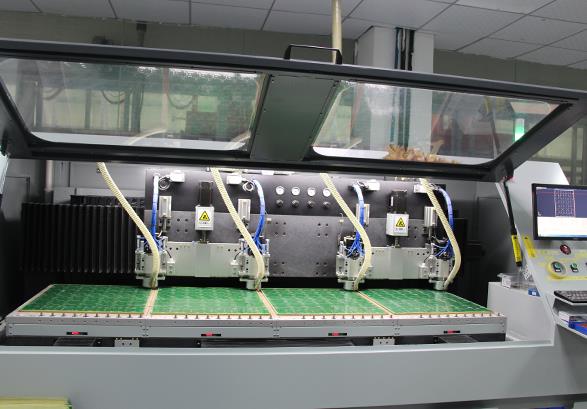Prepreg is a large class of products sold as commodities in the PCB FR-4 copper clad laminate industry. When a PCB factory makes a multilayer printed board, it uses it to glue together the inner layers that have been made. In the past, the production of multilayer printed circuit boards required at least two prepregs for each layer, so that the resin can fill the gaps between the inner layers and compensate for the possible defects of each prepreg during lamination. However, with the thinning of multi-layer PCB boards and the need to reduce manufacturing costs, it is not uncommon to use only one prepreg per layer when multi-layer printed circuit boards are laminated. Therefore, the requirements for the quality and appearance of prepregs are getting higher and higher.
The surface smoothness of the prepreg should be good, the rubber particles should be less, there should be no fish eyes, lack of glue, exposed cloth patterns, impurities, black lines, colored lines, and warp and weft should not be skewed. The tension of the winding device should be constant during the production process, because as the diameter of the winding increases, the winding speed will linearly decrease. Constant tension can ensure the winding quality of the prepreg and avoid the occurrence of defects such as tight winding and creases.

The level and verticality of the guide rollers of the gluing machine must be adjusted well, and the winding core must have high precision. It is a prerequisite. During the winding process, the operator should follow up and observe, and promptly remove the unqualified products. For PCB factories with better conditions, CCD prepreg visual inspection instrument can be used. For prepregs with defective appearance, it will automatically record and alert the operator to prompt the operator to deal with it in time.
The quality of the glass cloth used for the production of PCB prepregs is higher than that for the production of FR-4 copper clad laminates, and the production process conditions are also different from the production of bonding sheets, so that prepregs with higher quality factors can be produced.
For the problem of fish eyes, you can consider adding an appropriate amount of fluorocarbon surfactant to the glue. Because the fluorocarbon chain structure is far more stable than the hydrocarbon structure, it has extremely high thermal stability and chemical resistance; on the other hand, it has With extremely high surface activity, it can significantly reduce the surface tension of the aqueous solution at very low application concentrations (such as adding only a few ten thousandths to the solution can reduce the surface tension of the aqueous solution to below 20 dyn/cm). Therefore, adding an appropriate amount of fluorocarbon surfactant to the glue can improve the penetration of the glue and prevent fisheyes. At the same time, it can significantly improve the heat resistance and chemical resistance of the substrate. It is very suitable for lead-free and high-temperature boards.上 Application. For thinner prepregs, such as products with a thickness below 1080, should be produced on a gluing machine with a lower oven height and a low-tension system.
In addition, for PCB factories with relatively high requirements for use, it is required that no bubbles exist on the prepreg, and the microbubbles should be eliminated as much as possible. The first solution is to adjust the ratio of solvents with different boiling points in the glue, so that the solvent on the prepreg impregnated with the glue is gradually volatilized. At the same time, adjust the temperature of each temperature zone of the oven of the gluing machine, especially the temperature of the upper section of the oven. Below the upper section of the oven, the temperature is appropriately lowered to allow the low boiling point solvent to volatilize first. When necessary, the production speed needs to be adjusted, and the coordination of several measures is an important means to eliminate bubbles and micro-pores on the prepreg.